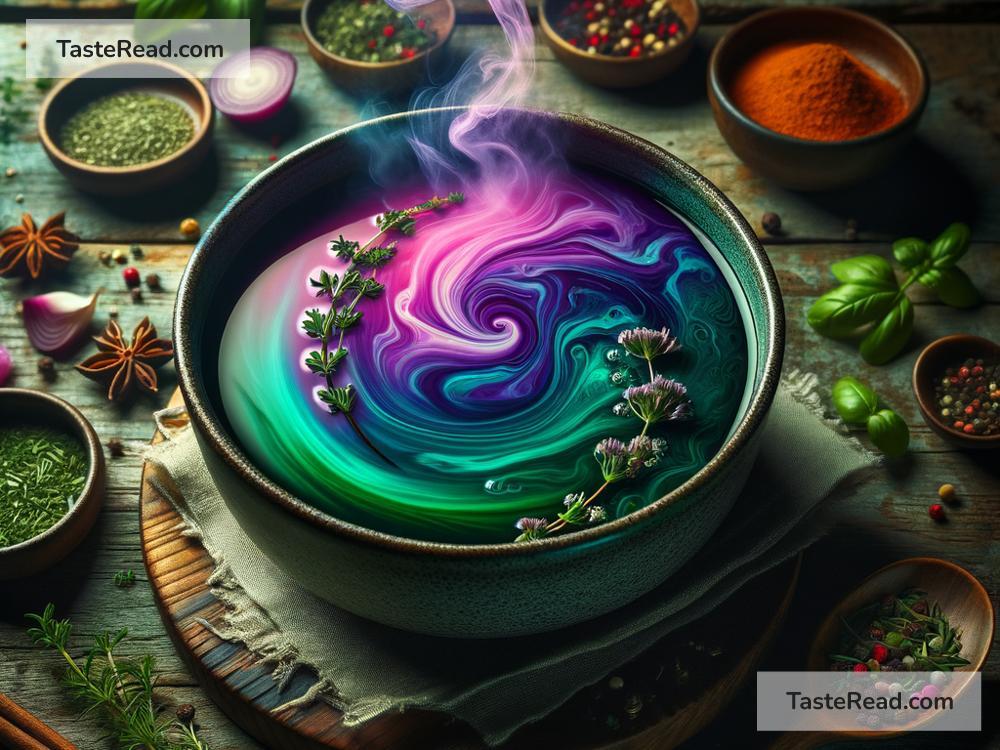The Legend of the Soup That Changes Colors
Food has always been an essential part of human life and culture. Throughout history, recipes and ingredients have been passed down from generation to generation. But every now and then, stories about magical or mysterious foods emerge. One such tale is the legend of the soup that changes colors. It might sound like a fantasy, but this fascinating story has intrigued people all over the world. Let’s dive into the details of this magical soup and learn why its legend still captures imaginations today.
The Origins of the Soup
The story of the soup that changes colors comes from an old village in a mountain valley. The village was surrounded by forests full of unusual plants and hidden treasures. Among the plants that grew in this area was a rare herb called “Chameleon Root.” The villagers believed this root had magical properties because it could change its appearance depending on its surroundings. Sometimes it looked green, other times purple, and occasionally even gold.
One day, an old woman named Mara discovered a way to use Chameleon Root in cooking. She boiled it with water and added a few simple ingredients, like onions, garlic, and salt. But something unexpected happened as she stirred the soup. The water in the pot changed colors! First, it turned a deep blue, then shifted to bright yellow, and finally to soft pink. Mara was amazed, and so were the villagers who came to check her creation.
The Mystery Behind the Soup
The soup quickly became famous in the village, and everyone wanted to taste it. Mara shared her recipe, but the soup behaved differently for everyone. For some villagers, the soup turned green and orange. For others, it sparkled like silver.
People started to believe the soup was more than just food—it was magical. According to the legend, the soup’s colors reflected the person who was cooking it. If someone was feeling happy, the soup might turn vibrant shades like yellow or bright red. If someone was feeling sad, the soup could turn gray or dark blue. Villagers said the soup changed colors based on emotions, intentions, and even hidden secrets.
Of course, not everyone agreed about the soup’s magic. A few villagers thought the soup’s color-changing was caused by science or the special plants in the area. They believed Chameleon Root contained unusual chemicals that reacted with heat, water, or other ingredients. But the mystery only added to the soup’s legend.
The Soup and Its Lessons
Over time, people began to use the soup for more than just eating. They would make it when they wanted to learn more about themselves or share their feelings with others. For example, if someone was confused about a decision, they would make the soup and watch the colors. If the soup turned peaceful shades like blue or green, they believed it meant their choice was wise. If the soup looked stormy, like black or gray, they might rethink their plans.
Families also used the soup during celebrations. At weddings, the color-changing soup was served as a symbol of the couple’s new journey together. During holidays, the soup became a way to bring people closer. The villagers believed that no matter what the soup looked like, it would always remind them to accept and understand their emotions.
Is the Soup Real?
Today, people wonder if the soup that changes colors ever existed. Some say the tale was invented to teach villagers about emotions, self-reflection, and community. Others believe the soup is real but very rare, and the plant that made it possible—Chameleon Root—has disappeared over time. Scientists have searched for any clue about plants like Chameleon Root, but nothing has been confirmed.
Some creative cooks have tried to recreate the soup’s magic in their own kitchens. They use colorful ingredients like red cabbage, butterfly pea flowers, or beets that can change shades when mixed with acids like lemon juice or vinegar. These experiments might not carry the same emotions as Mara’s soup, but they show how food can still be magical.
What We Learn From the Legend
Whether the soup was truly magical or just a story, it leaves behind important lessons. It reminds us that food can be more than fuel for our bodies—it can connect us to others, reflect our emotions, and even inspire us. The legend of the soup teaches us about self-discovery, the importance of community, and the magic that can exist in ordinary things.
The next time you cook or share a meal, think about this colorful soup and what it represents. Even without Chameleon Root, maybe the food you make can bring a little wonder into your life. Who knows? Maybe your cooking has its own kind of magic waiting to be discovered!
So, the next time you hear a story about a magical dish, don’t dismiss it. Legends like the soup that changes colors remind us of the power of imagination, tradition, and the connections we build through food. Whether the soup was real or simply a myth, its tale warms hearts and sparks curiosity across generations. After all, what’s life without a little magic?


